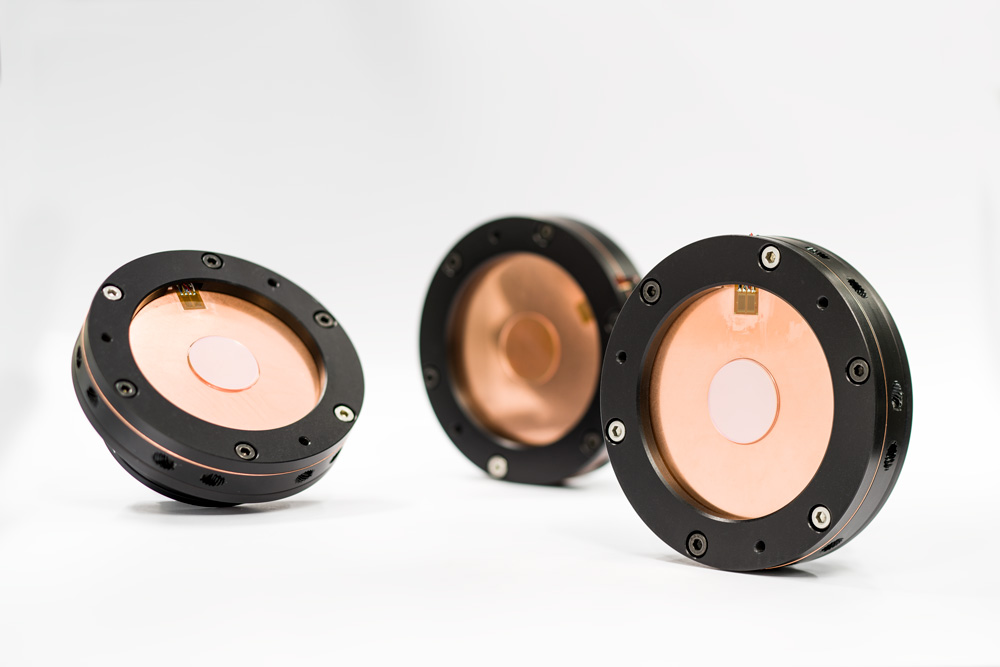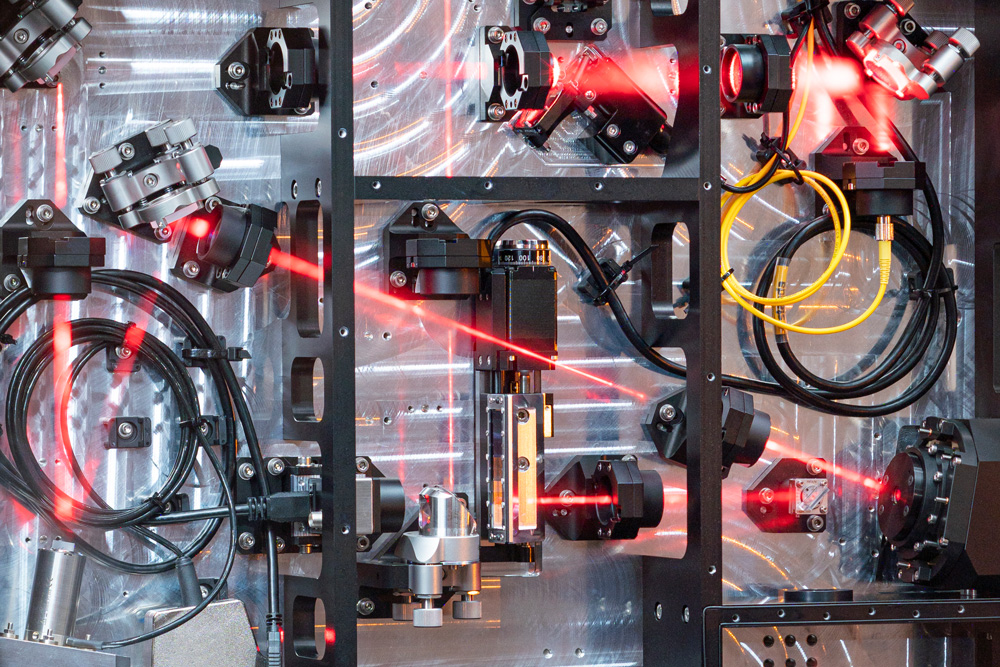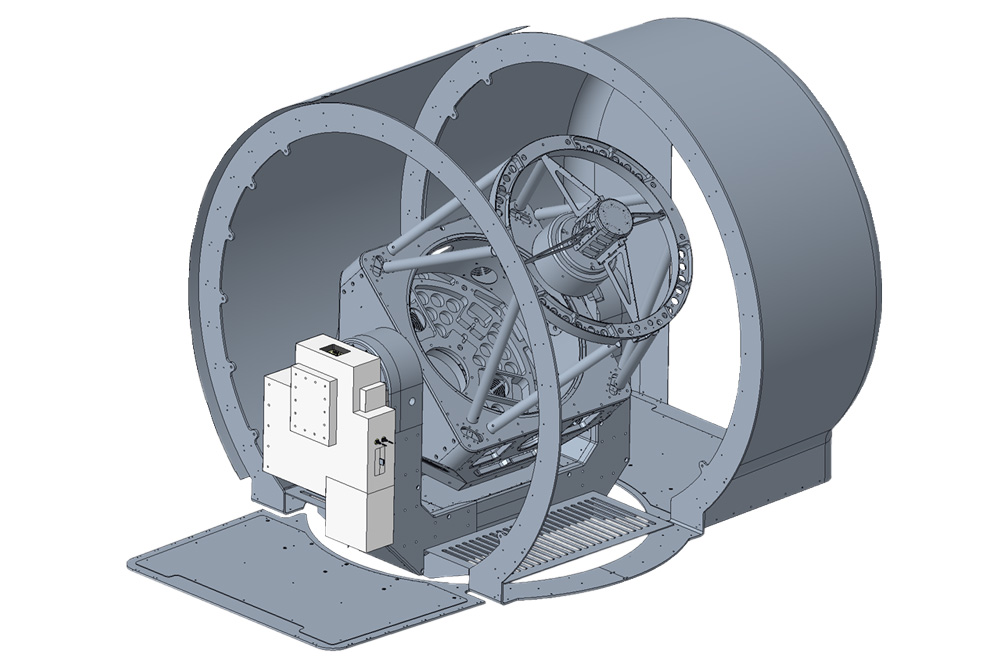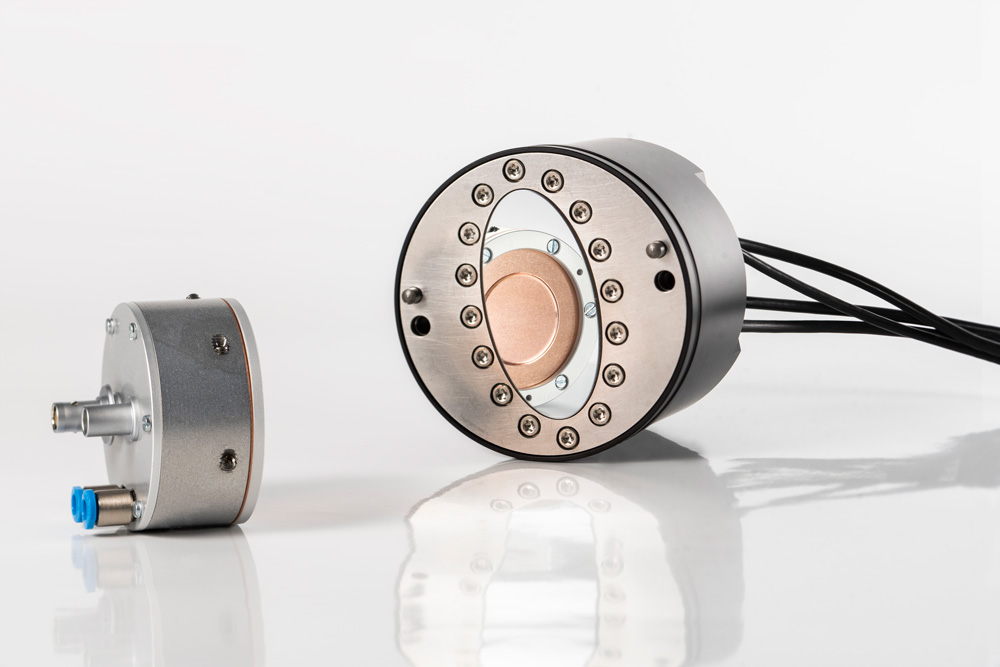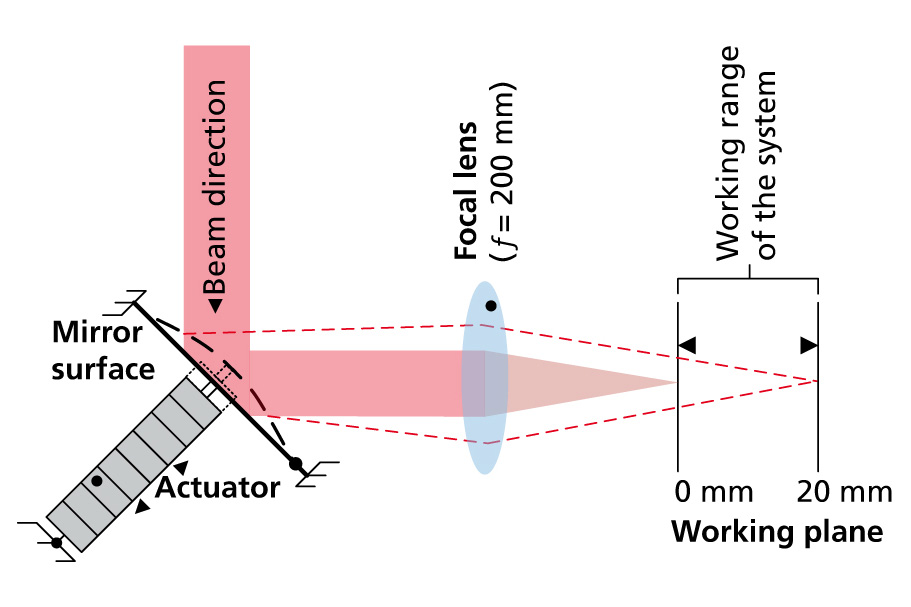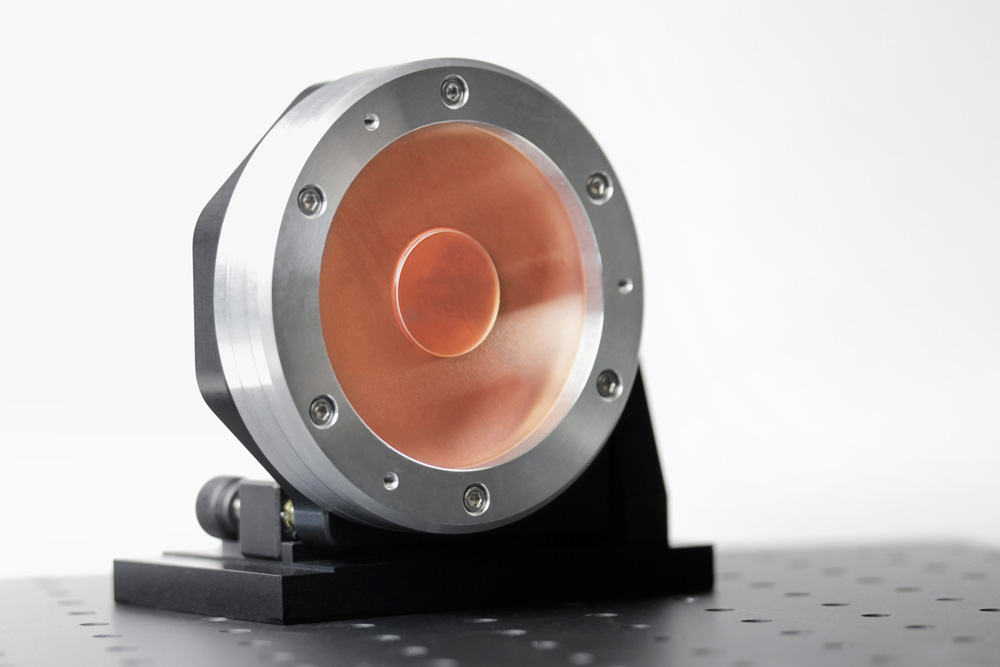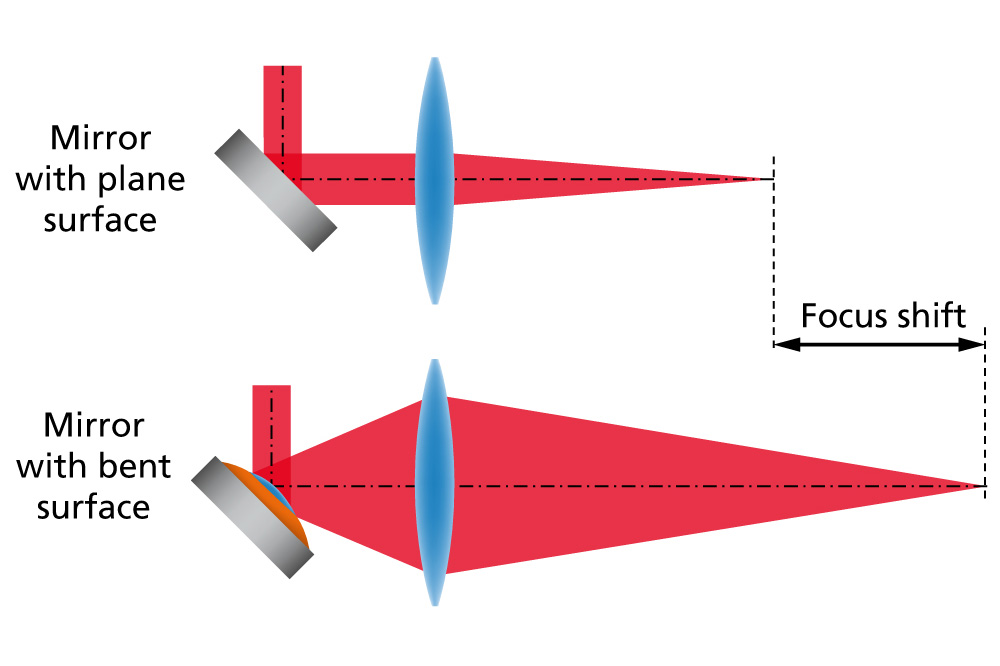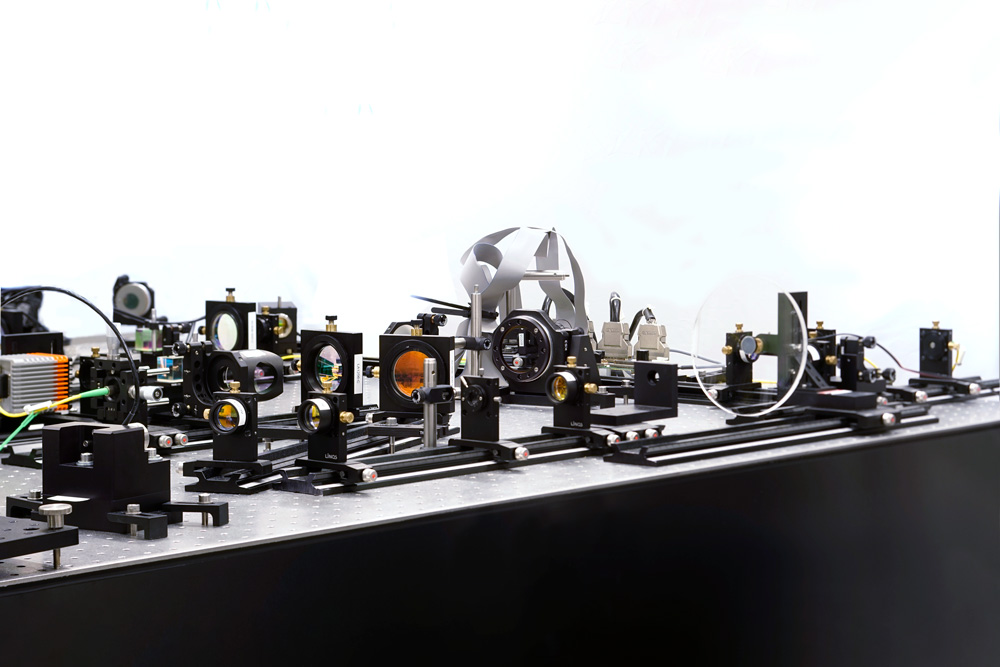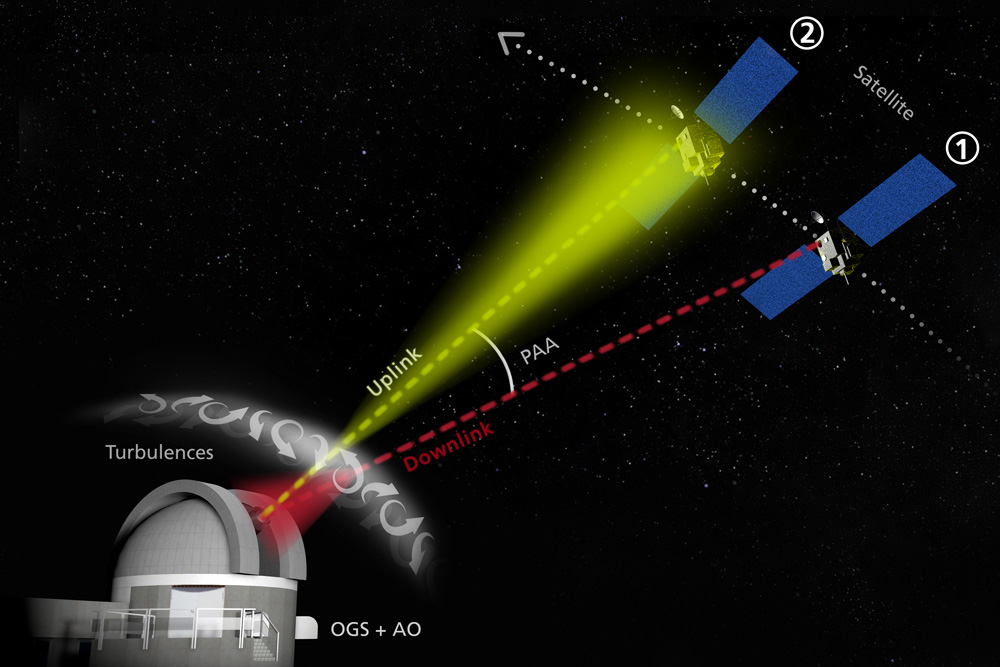The dynamic focus-shifting mirror enables fast focal length changes in optical systems and can be used, for instance, to adapt the focus position in laser processing machines (Fig. 2). The mirror setup is based on a unimorph concept using a piezoelectric disc bonded to a thin glass substrate with a highly reflective multilayer coating (Fig. 1). An integrated copper layer improves the heat dissipation and thus increases the mirror’s laser damage threshold. When a voltage is applied to the piezoelectric disc, it bends the mirror substrate, which in turn changes the radius of curvature of the mirror (Fig. 2). This specific mechanical design enables the mirror surface to bend down to a radius of curvature of 3.4 m.
In a verification test, the focus mirror was combined with a commercial processing head. A collimated beam from a multi-mode laser source was reflected at an angle of 45° by the focus mirror and afterwards focused by the processing head. Through the actuation of the mirror, a focus shift of 3.6 mm with stable optical beam quality was achieved. The focal length range is defined by the nominal focal length of the processing head and the mirror’s radius of curvature. If the mirror is combined with a processing head of 200 mm focal length, an even larger focal length change of 20 mm is achievable.
The mirror’s step response was characterized and optimized by modulating the excitation signal. In doing so, a short response time of less than 2 ms for full deflection is possible, which is significantly faster than commonly known state of the art solutions for focus shifting.
Thanks to the actuator’s short response time, it reduces the laser processing time compared to commercial solutions for focus shifting. Based on the mirror’s extensive focal length change and its convincing thermal properties, we see application fields primarily in laser cutting and welding. As proven by our measurements, the mirror can be used for high-power applications up to 6 kW laser power (continuous wave) at 1064 nm wavelength. The mirror’s surface only has a small and non-power-related influence on the beam quality factor M², which was slightly increases from M² = 2 (only laser source) to M² = 3 by using the focus mirror.
The mirror is designed for a beam diameter of 1” and can easily be integrated into processing heads using commercially available 3” mirror mounts. Application-specific customizations such as coatings for further laser wavelengths, beam aperture or the adaption of the mirror as 90° deflection mirror are possible.
